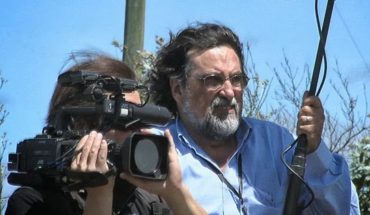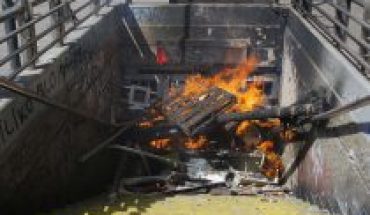Although the occurrence of tornadoes in Chile is not new, his study is. Bradford Barrett, an academic in the Department of Oceanography at the U.S. Naval Academy and PhD in Meteorology at the U. of Oklahoma, held the conference “Recent Tornadoes of Chile” yesterday. Preliminary analysis and differences with tornadoes in the U.S.” at the University of Valparaiso.
The expert came to study the phenomena produced in May in Los Angeles, Talcahuano and Concepción, which destroyed hundreds of houses. The one that affected the latter intercom reached a speed of 101.5 km/h and traveled for more than 17 km.
Tornadoes, he explained, work with a prescription that goes along with a thunderstorm that has a list of ingredients: moisture, atmospheric instability and a source of air rise.
To this is added “a turn in the air in the interior parts of the storm, the lower part. These are the ingredients, what we call atmospheric instability: both moisture and heat, as that shear, is important.”
He insisted that the recipe is the same everywhere, but he is struck by Chile’s presence of the mountains, their topography and the role they would have in their creation.
Barret said that although there are not many storms in the metropolitan urban area, there are storms in the mountain range. “Especially in the summer months there are many storms and sometimes electric ones, and the first thing that is needed are these,” he recalled.
“There are records of many tornadoes in other cities similar to Santiago (…) It is possible that a tornado will be generated in Santiago, in the Metropolitan Region, you only need the ingredients that sometimes the mountains interrupt, although it depends on the trajectory of the storms”.
According to the meteorologist the chances of one being formed anywhere in Chile exist, “at least it takes a storm, and then the steps to have the rotation low.”
In the Meteorological Directorate of Chile have accredited swirls in San Bernardo and Buin, and recall that in the capital the distance between the andes mountain ranges and the Coast is wide, so that the flat conditions for their occurrence in the valley could occur.
But despite technological advances, the prediction is still distant. “In the U.S., where there are more than a thousand tornadoes a year, what is emitted are probabilities, risk zones. Then, after the report of a tornado or the observation of one, very short-term warnings, of one or half an hour in small areas, of the size of a commune are issued,” Barret said.
In any case, he highlighted Chile’s predictive capabilities. “I greatly admire the people of the Weather Service, as well as the Chilean Navy. They work miracles with the little implementation they have,” he said.
translated from Spanish: Meteorologist who studied Biobío phenomenon: “It is possible that a tornado will be generated in Santiago”
July 12, 2019 |





